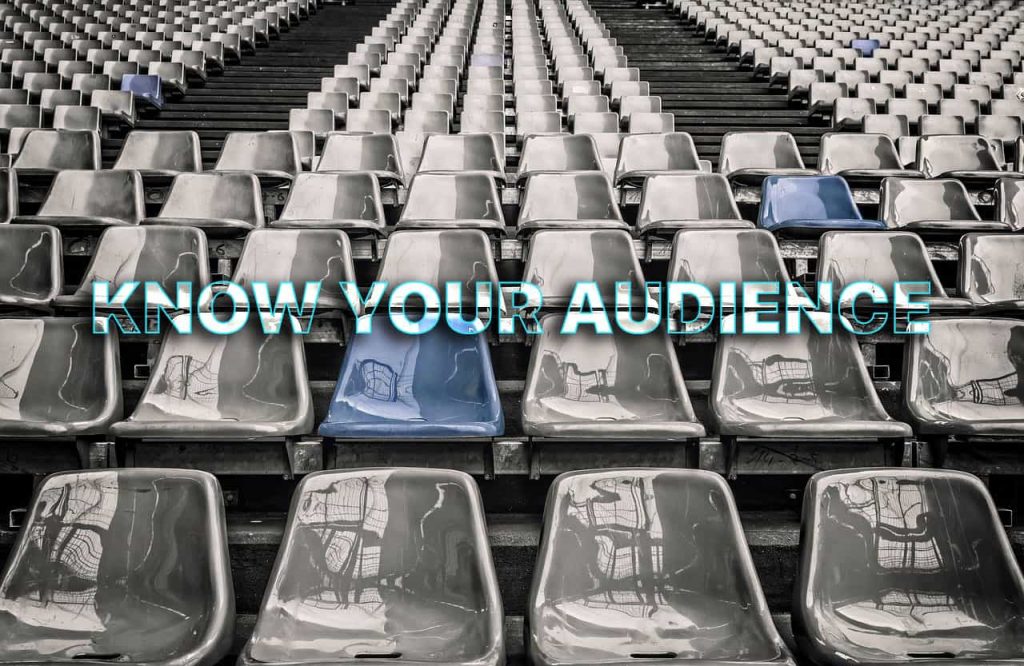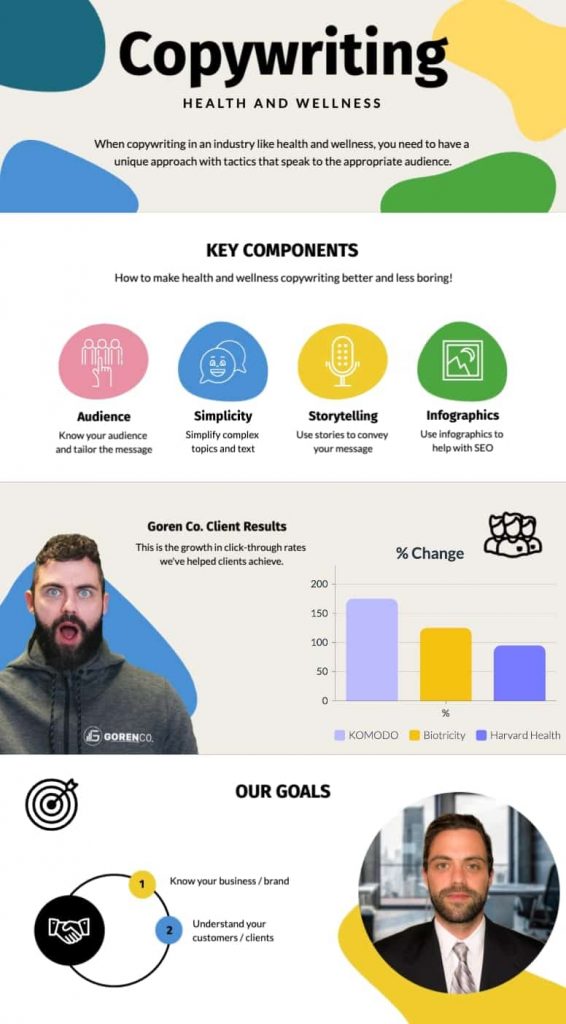As an experience health and wellness copywriter, I’ve helped companies across several health industries achieve an average growth of 450% website visits and 120% higher conversion rates. I don’t say this to brag. I just don’t want you to think this article is written by some Joe Shmoe. Everything in this article is written based on experiences that I’ve had with different types of organizations in the health and wellness space.
There is a fairly basic framework for writing in the health and wellness space. Whether you’re writing ad copy, blog content, medical journal article, manual, or social media post, some basic rules apply. I’ll take a deep dive on that in this article to help you with your project(s) and tasks.
Why Hire a Professional Health and Wellness Copywriter?
Think of it this way: you wouldn’t ask your neighbor to fix your plumbing unless they were a plumber, right? Similarly, when you’re looking to get the word out about health and wellness, when it comes to health, medicine and wellness, the topics and ideas are so nuanced. A professional and experience health and wellness copywriter has been through the research trenches. Investigating topics meticulously and diligently to prove a point.
Understanding Different Health and Wellness Industries
Each sector in health and wellness has its own vibe, its own audience, and its own way of communicating. Let’s break it down.
Copywriting in the Pharmaceutical Industry
Writing for the pharma industry is a lot like crafting those tiny instructions inside a medicine box. It needs to be super clear, no room for misinterpretation, because, let’s face it, we’re talking about stuff that affects people’s health. It’s about striking that balance between being informative but not so heavy that you need a medical degree to understand it.
It’s really about understanding the audience (which I’ll discuss later in the article). Are you writing about a new discovery for a medical journal? Or are you trying to break down and simplify topics for the everyday person? Stylistically, the two couldn’t be more different. And making that distinction is crucial when writing on the topic.
Fitness and Nutrition
Fitness and nutrition have become intertwined with the health and wellness market. And in terms of consumer attention, this industry garners the most of it. Copywriting in this industry needs to be more conversational and engaging to a larger audience.
We’re talking simpler language, real life examples and things that a larger majority of the population can relate to. Fitness and nutrition are NOT a perfect science. It’s no cookie-cutter approach. So, in some cases, you might be able to “wing it.” But it’s beneficial to have in depth knowledge to discuss points and break down concepts.
Mental Health Services
Mental health is a big deal in 2024. 1 in every 4 adults suffers from some form of mental health disorder. So if you’re communicating advice, you need to have first-hand knowledge of the different mental health issues and how to deal with them. You don’t necessarily need to be a professional. If you’ve been around, it enough and consulted with doctors and neurologists, you have some baseline knowledge that can be helpful.
If you’re selling courses, products, methods, etc., you’ll need to approach with caution. You don’t need to be a lawyer, you just need to communicate in a way that’s helpful and wo’t land you in hot water.
Holistic Health and Alternative Therapies
And for holistic health and alternative therapies, we’re blending the old with the new. It’s like telling stories of ancient remedies backed by modern research. We’re the bridge between grandma’s herbal teas and the latest studies on their benefits. We’re here to open doors to new (well, sometimes ancient) paths to wellness, with a voice that’s as curious and adventurous as our readers.
Strategy for Effective Health and Wellness copywriter
The most important thing when writing on this topic is know the audience. Nothing is worse the writing a 2,000-word blog that doesn’t hit with the target audience. This is where it all starts.
Tailoring Language to Audience Expertise
Chatting with doctors or nurses? It’s like discussing the mechanics of a car with an auto engineer. You can use all the technical terms you want – myocardial infarction, proprioception, you name it. They speak the lingo. It’s about using the right jargon to connect and convey your message without oversimplifying.
You have to do your best to get inside the head and heart of the people you’re gearing content to. Understand what their life is like with a particular job or role. Only then will you be able to create content that converts.
Simplifying Concepts for General Public
But when you’re talking to the general public, it’s a different ballgame. If you’re selling a product online to the every-day consumer, simplify complex topics into benefits they can understand. You should always communicate benefits of your product or service no matter what the audience is. But it’s even more important with consumer-grade products.
Leveraging Storytelling in Health Narratives
Everyone loves a good story, right? Especially one where the hero triumphs – and in health narratives, the hero is often the patient. When you’re telling their stories, it’s not just about the facts. It’s about the journey – the struggles, the wins, and the lessons. Think of it as sharing a triumph over a campfire, inspiring others to see themselves in the story and feel that change is possible for them too.
Emotional Engagement in Mental Health Writing
Now, when we delve into mental health, it’s like whispering a secret. It’s delicate and personal. You’ve got to tread lightly but with purpose. It’s not just about understanding the condition; it’s about feeling the highs and lows, the pain, and the relief. You’re creating a space where empathy meets experience, and every word needs to wrap around the reader like a warm hug.
Incorporating Visuals and Infographics
Ever tried to explain a concept and just drawn it out instead? That’s what visuals do for health content. They turn a complex diet plan into a simple pie chart or a convoluted workout routine into an easy-to-follow infographic.
Infographics are also very attractive to Google’s algorithm. Google is a sophisticated machine that understands “it’s all about the user”. Infographics help the end user and Google knows that. So if you are using graphics, it will help your content rank higher in Google search results and that’s always good!
Using Imagery to Enhance Wellness Topics
And let’s not forget the power of a good image. Ever seen a picture of someone in a peaceful yoga pose and suddenly felt a wave of calm? That’s the magic of imagery. It sets the tone, evokes emotion, and can make the reader feel like they’re right there, breathing in that fresh, healthy air. It’s about choosing pictures that not only catch the eye but also capture the essence of the wellness journey.
Conclusion
Whether you are a health and wellness copywriter or not, I hope this guide helped. If you have any additional questions regarding your unique situation, feel free to reach out! Till next time.




